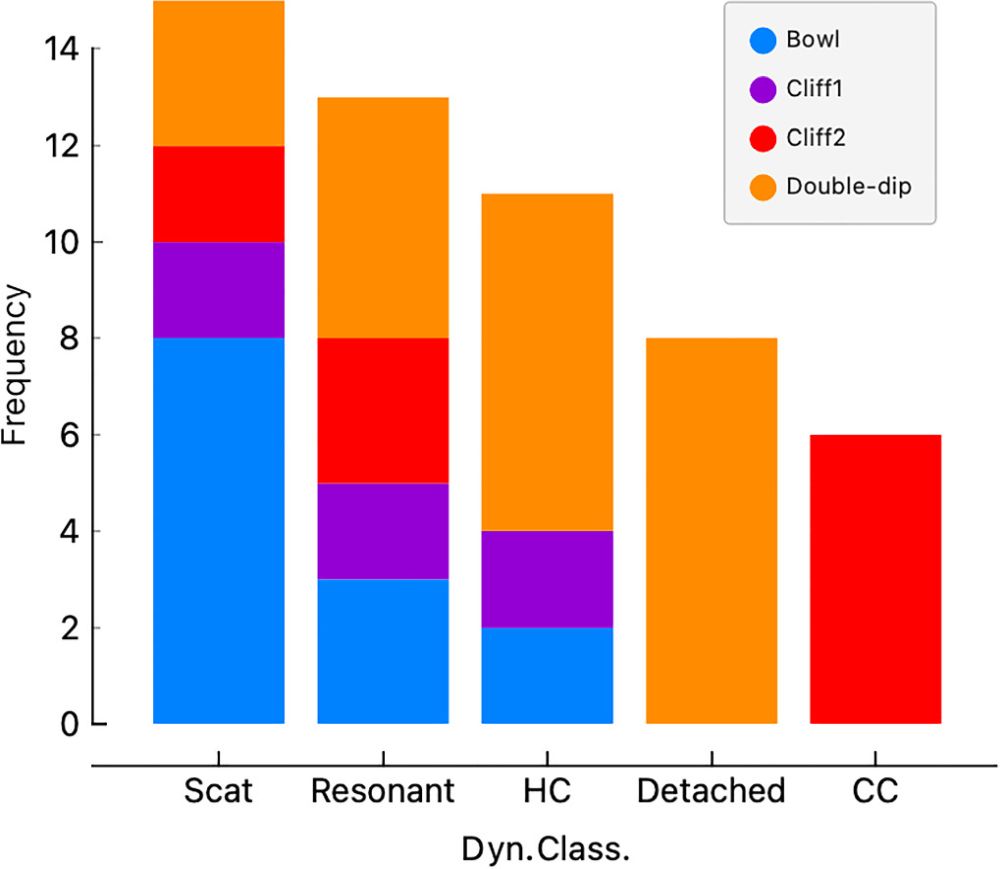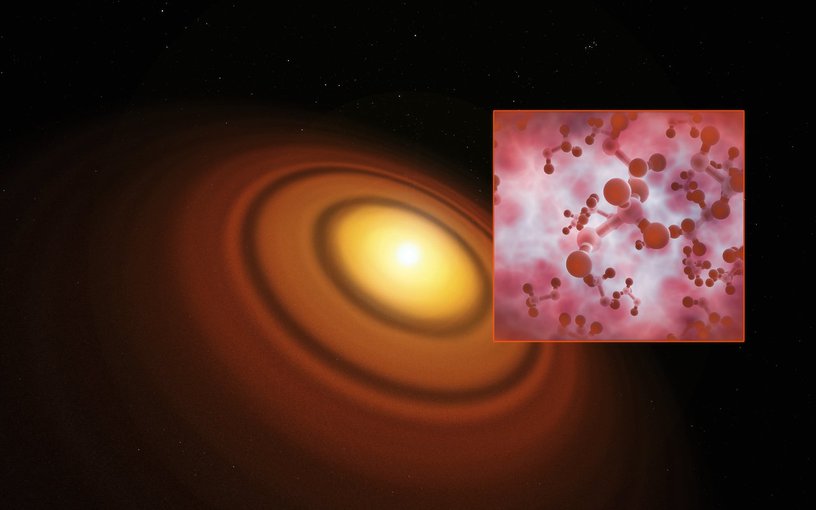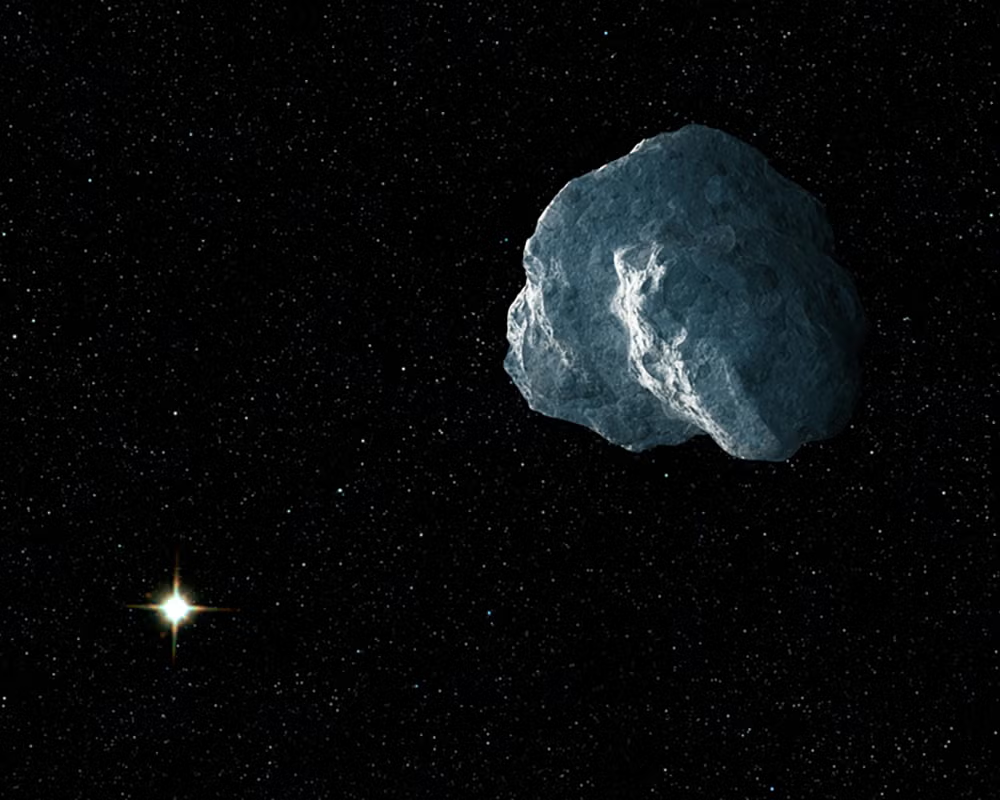Understanding how life started on Earth means understanding the evolution of chemistry in the Solar System. It began in the protoplanetary disk of debris around the Sun and reached a critical point when life appeared on Earth billions of years ago. Close to the Sun, the chain of chemical evidence is broken by the Sun's radiation. But further out in the Solar System, billions of kilometres away, some of that ancient chemistry is preserved.
TNOs orbit the Sun beyond Neptune, at least 30 astronomical units (AU) from the Sun. They include Kuiper Belt Objects like Pluto and Makemake, scattered disk objects like Eris, and detached objects like Sedna. They also include objects in the Oort Cloud. A key characteristic of TNOs is that they're all far from the Sun and have frigid temperatures.
Their frigidity means that much of their chemistry is frozen in time. Nearer the Sun, planets undergo chemical changes driven by its energy, erasing evidence of their primordial chemistry. But in the distant reaches of the Solar System, not much changes. TNOs preserve material from the early Solar System and are, in that sense, a scientific treasure trove.
Though many TNOs are at extreme distances from the Sun, the JWST is bringing some of them within our observational reach. New research in The Astrophysical Journal Letters explains how the space telescope revealed two groups of TNOs with different methanol abundances.
Methanol (CH3OH) is critical because it's a precursor to prebiotic chemistry. It's one of the simplest organic molecules containing carbon, hydrogen, and oxygen. Methanol is an important stepping stone to amino acids, sugars, and nucleobases, which are the building blocks of proteins and nucleic acids. The Sun's UV radiation rapidly destroys methanol, but it is abundant in interstellar space and in the coldest reaches of the Solar System, where TNOs dwell.
While the Sun is too distant to drive chemical reactions on TNOs, there's still a source of energy that can. Cosmic ion radiation on the heliosphere's edge can affect the chemistry of TNOs over long timeframes. Using the JWST, the researchers showed how that radiation affected surface ice methanol concentrations on two distinct TNO populations.
The research is titled "Spectral Diversity of DiSCo's TNOs Revealed by JWST: Early Sculpting and Late Irradiation." Associate Professor Ana Carolina de Souza-Feliciano from the University of Central Florida Department of Physics is one of the lead authors.
"Methanol, a simple alcohol, has been found on comets and distant TNOs, hinting that it may be a primitive ingredient inherited from the early days of our solar system — or even from interstellar space," Pinilla-Alonso said in a press release. "But methanol is more than just a leftover from the past. When exposed to radiation, it transforms into new compounds, acting as a chemical time capsule that reveals how these icy worlds have evolved over billions of years."
In previous research by some of the same authors, five groups of TNOs were identified by their spectral groups and dynamical classes. The classes are scattered disk objects, resonant objects, hot classical TNOs, detached objects, and cold classical TNOs. In this new effort, the researchers identified sub-groups of TNOs, two of which they call Cliff1 and Cliff2.
 This figure from the research shows the dynamical classes of TNOs and their spectral groups. A key observation is that all cold classical TNOs are in the Cliff2 group. Image Credit: Brunetto et al. 2025.
This figure from the research shows the dynamical classes of TNOs and their spectral groups. A key observation is that all cold classical TNOs are in the Cliff2 group. Image Credit: Brunetto et al. 2025.
Our findings provide compelling evidence of the existence of a group of TNOs (Cliff1) whose spectra are rich in bands from several species (CH3OH, H2O, CO2, CO, organics)," the authors write. "These objects are distinct from the ones that formed and always remained in the outermost part of the disk (Cliff2).
In the Cliff1 group of TNOS, surface CH3OH (methanol) is selectively destroyed by surface irradiation, which produces stratification. In the Cliff2 group, the radiation produces secondary CO2, H2O, and CO, which are by-products of ion-irradiated CH3OH. "Thus, we can reasonably hypothesize that Cliff2-TNOs are the ones that formed farthest from the Sun," the authors write in their paper.
The existence of the two groups shows that there was early heterogeneity among planetesimals.
What excited me the most was realizing that these differences were linked to the behavior of methanol — a key ingredient that had long been elusive on TNOs from earth-based observations," Pinilla-Alonso said. "Our findings suggest that methanol is being destroyed on the surface of TNOs by irradiation, but remains more abundant in the subsurface, protected from this exposure.
These results open a "... window into the conditions of the outer solar nebula and, by extension, other protoplanetary disks," the researchers explain in their paper. "The spectral signatures suggest that some of these planetesimals were formed at or beyond the CH3OH ice line in the protoplanetary disk, offering an unprecedented opportunity to probe primordial disk chemistry and icy grain formation ("heritage")."
 This research can help us understand the evolution of prebiotic chemistry not only in our own Solar System but also in other, distant ones. Researchers have found methanol in the protoplanetary disks around other stars, including TW Hydrae, seen in this artist's illustration. Image Credit: ESO/M. Kommesser.
This research can help us understand the evolution of prebiotic chemistry not only in our own Solar System but also in other, distant ones. Researchers have found methanol in the protoplanetary disks around other stars, including TW Hydrae, seen in this artist's illustration. Image Credit: ESO/M. Kommesser.
The Cliff group TNOs are like Solar System time capsules. They're the home of what are called cold-classical TNOs. This group has nearly circular orbits with low orbital inclinations and semi-major axes of about 45 AU. They follow dynamically stable orbits that have been unchanged since the Solar System formed. Astronomers think they're the most pristine population of objects in the Solar System.
One of the reasons why this group is a key for the outer solar system understanding is [because] it contains all the cold-classical TNOs, Pinilla-Alonso said. "The cold-classical TNOs are the only dynamic group that probably stayed in the place where they formed from the formation of the solar system to today.
Rosario Brunetto, an astronomer at the Université Paris-Saclay, helped lead this research. Brunetto says that these results will also help scientists interpret other JWST results.
This discovery not only reshapes our understanding of TNOs but also provides a crucial reference for interpreting JWST's observations of other distant objects, such as Neptune Trojans, Centaurs and asteroids, as well as for future missions exploring the outer solar system," Brunetto said. "Beyond its scientific significance, the search for methanol in the solar system also fuels curiosity and inspires new generations to explore the cosmos and understand the chemical evolutions in space.
More:
- Press Release:UCF Scientists Use James Webb Space Telescope to Better Understand Solar System's Origins
- New Research:Spectral Diversity of DiSCo's TNOs Revealed by JWST: Early Sculpting and Late Irradiation
- Previous Research:A JWST/DiSCo-TNOs portrait of the primordial Solar System through its trans-Neptunian objects
 Universe Today
Universe Today
